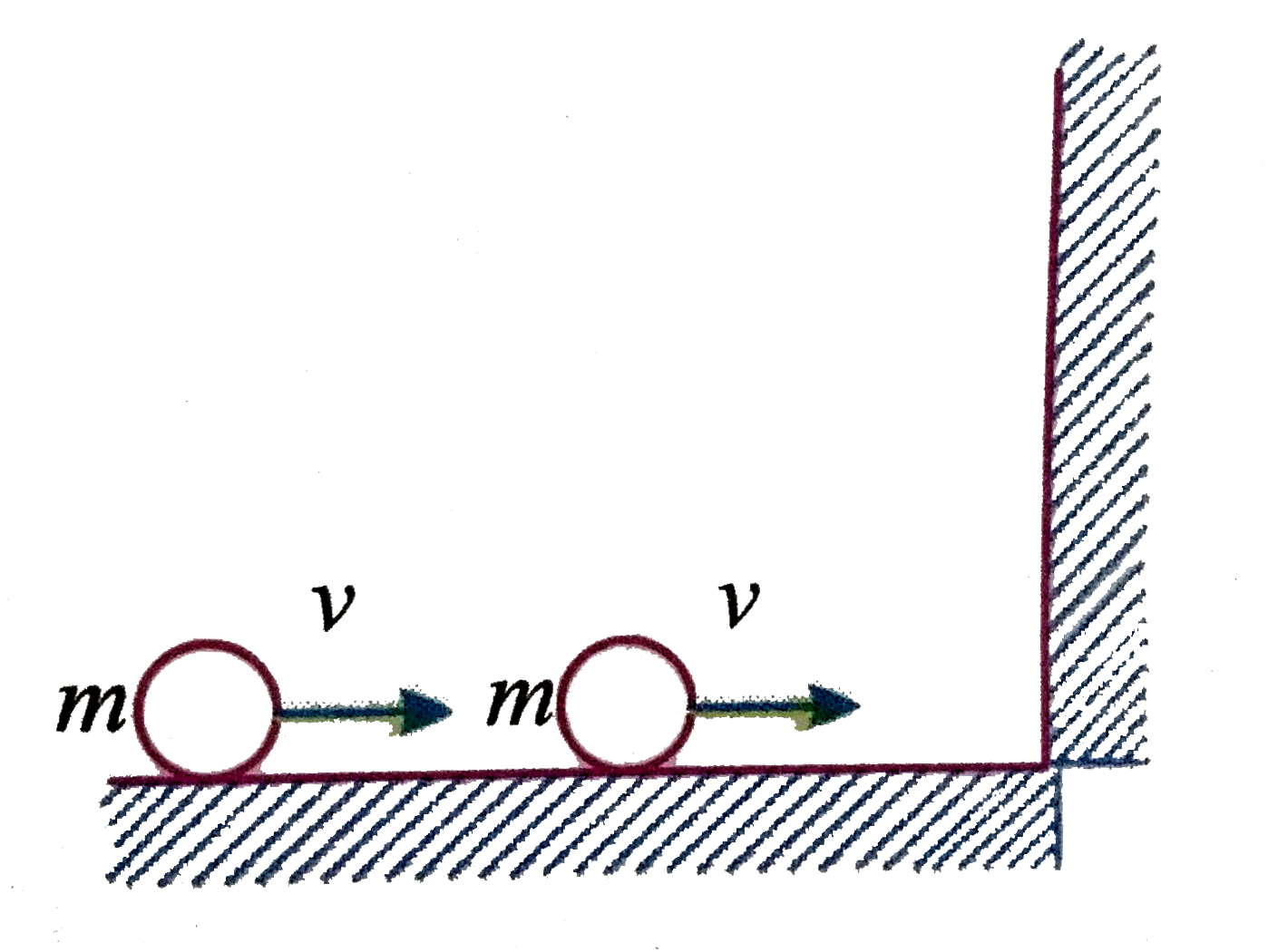A perfectly elastic ball P1 of mass m moving with velocity v collidies elastically with three exactly similar balls P2,P3,P4 lying on a smooth table as shown. Velocities of the four balls after the collision are
 Solution in Telugu
Solution in Telugu
v,v,v,v
0,2v,3v,4v
0,0,0,v
0,0,0,0
The correct Answer is:C
Step by step video & image solution for A perfectly elastic ball P_(1) of mass m moving with velocity v collidies elastically with three exactly similar balls P_(2),P_(3),P_(4) lying on a smooth table as shown. Velocities of the four balls after the collision are by Physics experts to help you in doubts & scoring excellent marks in Class 11 exams.
Updated on:21/07/2023Topper's Solved these Questions
- WORK POWER ENERGYBOOK - AAKASH SERIESCHAPTER - WORK POWER ENERGYEXERCISE - EXERCISE - 3
61 Videos
- WORK POWER ENERGYBOOK - AAKASH SERIESCHAPTER - WORK POWER ENERGYEXERCISE - EXERCISE - 1B
39 Videos
- WORK -POWER-ENERGYBOOK - AAKASH SERIESCHAPTER - WORK -POWER-ENERGYEXERCISE - PRACTICE SHEET (ADVANCED) (STRAIGHT OBJECTIVE TYPE QUESTIONS)
36 Videos
- WORK, POWER & ENERGY BOOK - AAKASH SERIESCHAPTER - WORK, POWER & ENERGY EXERCISE - PRACTICE EXERCISE (PERFECTLY INELASTIC COLLISIONS)
5 Videos
Similar Questions
If →A+→B=→Rand2→A+→B is perpendicular to →B then
View Solution(A): A spring has potential energy, both when it is compressed or stretched.
(R) : In compressing or stretching, work is done on the spring against the restoring force.
View SolutionThe velocity of a particle of mass 10−2kg is given as →v=(2xˆu+3yˆj+4zˆk) m/sec (where x, y and z are in meter). The amount of work done by applied force in displacing a particle from (1m, 2m, 0) to (-1m, 3m, 1m) is …..
View SolutionA shot moving with a velocity 140ms−1 collides a wooden block and comes to rest in it. If mass of the block is 13 times the mass of the shot, velocity of the block is
View SolutionA heavy ball of mass 2M moving with a velocity v_(0) collides elastically head on with a cradle of three identical ball each of mass M as shown in figure. Determine the velocity of each ball after collision.
View SolutionA ball of mass m moving with velocity V, makes a head on elastic collision with a ball of the same moving with velocity 2V towards it. Taking direction of V as positive velocities of the two balls after collision are.
View SolutionTwo balls each of mass 'm' are moving with same velocity v on a smooth surface as shown in figure. If all collisions between the balls and balls with the wall are perfectly elastic, the possible number of collisions between the balls and wall together is

View SolutionA perfectly elastic ball P_(1) of mass 'm' moving with velocity v collides elastically with three exactly similar balls P_(2), P_(3), P_(4) lying smooth table. Velocity of the four balls after collision are .
View SolutionA ball of mass M moving with a velocity v collides perfectly inelastically with another ball of same mass but moving with a velocity v in the opposite direction. After collision
View SolutionA ball of mass m moving with a velocity v undergoes an oblique elastic collision with another ball of the same mass m but at rest. After the collision if the two balls move with the same speeds , the angle between their directions of motion will be:
View SolutionA ball A of mass M collides elastically with a similar ball B at rest as shown in figure. Initially velocity of ball A is u m/s. After collision,
View SolutionA ball of mass m_(1) is moving with velocity 3v. It collides head on elastically with a stationary ball of mass m_(2) . The velocity of both the balls become v after collision. Then the value of the ratio (m_(2))/( m_(1)) is
View SolutionA 10kg ball and 20kg ball approach each other with velocities 20ms−1 and 10ms−1 respectively. What are their velocities after collision if the collision is perfectly elastic?
View SolutionA 10kg ball and 20kg ball approach each other with velocities 20ms−1 and 10ms−1 respectively. What are their velocities after collision if the collision is perfectly elastic?
View SolutionTwo balls each of mass 'm' are moving with same velocity v on a smooth surface as shown in figure. If all collisions between the balls and balls with the wall are perfectly elastic, the possible number of collisions between the balls and wall together is

View SolutionA ball moving with speed u collides with an identical ball at rest. The velocities of two balls after collision are (If the collision is elastic):
View Solution
